|
|
|
Sort Order |
|
|
|
Items / Page
|
|
|
|
|
|
|
| Srl | Item |
| 1 |
ID:
067217
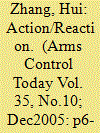

|
|
|
| 2 |
ID:
125659
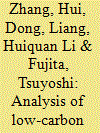

|
|
|
|
|
| Publication |
2013.
|
| Summary/Abstract |
CO2 mitigation strategies in industrial parks are a significant component of the Chinese climate change mitigation policy, and industrial symbiosis can provide specific CO2 mitigation opportunity. Technology is important to support symbiosis, but few studies in China have focused on this topic at the industrial park level. This research presented a case study in a national iron and steel industrial park in China. Focus was given onto carbon mitigation through industrial symbiosis technology using substance flow analysis (SFA). Three typical iron and steel industry technologies, including coke dry quenching (CDQ), combined cycle power plant (CCPP), and CO2 capture by slag carbonization (CCSC) were evaluated with SFA. Technology assessment was further conducted in terms of carbon mitigation potential and unit reduction cost. Compared with the Business as usual (BAU) scenario, application with CDQ, CCPP, and CCSC reduced the net carbon emissions by 56.18, 134.43, and 222.89 kg CO2 per ton crude steel inside the industrial parks, respectively, including both direct and indirect emissions. Economic assessment revealed that the unit costs for the three technologies were also high, thereby necessitating national financial support. Finally, relevant policy suggestions and future concerns were proposed and discussed.
|
|
|
|
|
|
|
|
|
|
|
|
|
|
|
|
| 3 |
ID:
104162
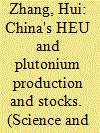

|
|
|
|
|
| Publication |
2011.
|
| Summary/Abstract |
This article discusses the history of China's production of highly enriched uranium and plutonium for nuclear weapons and uses new public information to estimate the amount of highly enriched uranium and plutonium China produced at its two gaseous diffusion plants and two plutonium production complexes. The new estimates in this article are that China produced 20 ± 4 tons of HEU, 2 ± 0.5 tons of plutonium, and currently has stockpiles of about 16 ± 4 tons of HEU and 1.8 ± 0.5 tons of plutonium available for weapons. The values for China's fissile material production are at the low end of most previous independent estimates, which range from 17-26 tons of highly enriched uranium and 2.1-6.6 tons of plutonium. These new estimates would be significant to assess China's willingness to join a fissile material cutoff treaty and a multilateral nuclear disarmament.
|
|
|
|
|
|
|
|
|
|
|
|
|
|
|
|
| 4 |
ID:
094514
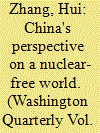

|
|
|
| 5 |
ID:
142265
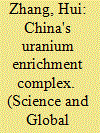

|
|
|
|
|
| Summary/Abstract |
New public information allows a fresh estimate of China's current and under-construction uranium enrichment capacity. This paper uses open source information and commercial satellite imagery to identify and offer estimates of the capacity of China's 10 operating enrichment facilities, located at 4 sites, using centrifuge technology most likely based on adapting Russian technology. The total currently operating civilian centrifuge enrichment capacity is estimated to be about 4.5 million separative work units/year (SWU/year), with additional capacity estimated to be about 2 million SWU/year under construction. Also China could have an enrichment capacity of around 0.6 million SWU/year for non-weapon military uses (i.e., naval fuel) or dual use. These estimates are much larger than previous public estimates of China's total enrichment capacity. Further expansion of enrichment capacity may be likely since China will require about 9 million SWU/year by 2020 to meet the enriched uranium fuel needs for its planned nuclear power reactor capacity of 58 gigawatts-electric (GWe) by 2020 under its policy of self-sufficiency in the supply of enrichment services.
|
|
|
|
|
|
|
|
|
|
|
|
|
|
|
|
| 6 |
ID:
089523
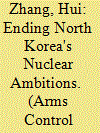

|
|
|
| 7 |
ID:
167796
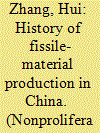

|
|
|
|
|
| Summary/Abstract |
This article reconstructs the history of China’s production of highly enriched uranium and plutonium for nuclear weapons based on newly available public sources. It begins with discussion of China’s first set of fissile-material production facilities, which China started building in 1958. It then details the first and second “third-line” construction campaigns, initiated in 1964 and the late 1960s, respectively. Finally, the article considers the policy implications of the history of China’s fissile-material production, particularly its influence on China’s attitude toward negotiating a fissile-material cutoff treaty.
|
|
|
|
|
|
|
|
|
|
|
|
|
|
|
|
| 8 |
ID:
138543
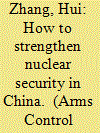

|
|
|
|
|
| Summary/Abstract |
China is a nuclear-weapon state and rising power entering an era of particularly rapid nuclear energy growth and fuel-cycle development. China’s approach to strengthening the security of its nuclear weapons, materials, and facilities is important because of the quantity of materials involved and the role that China plays in facilitating strong global action on nuclear security.
|
|
|
|
|
|
|
|
|
|
|
|
|
|
|
|
| 9 |
ID:
125588
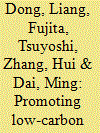

|
|
|
|
|
| Publication |
2013.
|
| Summary/Abstract |
China launched low-carbon city strategy to respond global climate change. Industrial symbiosis (IS) could generate both economic and environmental benefits in clustered industries and communities. This research shed light on how industrial symbiosis contributes to city's low-carbon development. An urban-level hybrid physical input and monetary output (HPIMO) model which covers physical energy inputs and air pollutants emissions, is established for addressing case study in a Chinese typical industrial city (Liuzhou). Based on current energy consumption and industrial symbiosis and the application of HPIMO model, scenarios related to industrial symbiosis, including waste plastics recycling, scrap tires recycling, flying ash recycling and biomass utilization are explored. Results show that compared with business-as-usual (BAU) scenario, IS can reduce solid wastes and further contribute to the co-benefits of energy saving, CO2 emissions reduction and air pollutants reduction. The finding is critical for national low-carbon strategy. Finally, policy implications to support the ever-improvement of IS promotion in China are proposed and discussed.
|
|
|
|
|
|
|
|
|
|
|
|
|
|
|
|
| 10 |
ID:
135310
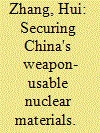

|
|
|
|
|
| Summary/Abstract |
This article describes the status of China's military and civilian nuclear programs, fissile material production and associated nuclear facilities, and the Chinese nuclear experts and officials’ perspectives on the nuclear terrorism threat. It gives details of China's nuclear security practices, attitudes, and regulations, as well as identifying areas of concern. The article recommends ways to strengthen China's nuclear material protection, control, and accounting systems and suggests opportunities for increased international cooperation.
|
|
|
|
|
|
|
|
|
|
|
|
|
|
|
|
| 11 |
ID:
177148
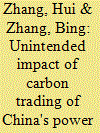

|
|
|
|
|
| Summary/Abstract |
Carbon trading is considered a strategy for reallocating carbon permits and reducing abatement costs that may also change energy consumption and the distribution of atmospheric pollution emissions, resulting in environmental health benefits or damage on a regional scale. In this research, we use an agent-based model to construct a national carbon emissions trading market of the power sector based on the year of 2013, and simulate the key atmospheric pollution emission patterns and the corresponding environmental health effects. We find that compared with a command and control policy, the carbon trading policy is able to reduce the CO2 emissions and save abatement costs by approximately 63.53 RMB/ton. Meanwhile, the results show the carbon trading policy would synergistically reduce PM2.5 emissions by 1.55 million tons. Addition, we use a simplified exposure-response model to estimate health benefits by synergistically reducing PM2.5 emissions, and find that the carbon trading policy would decrease 45,200 cases of all-cause mortality and generate 307.07 billion RMB in environmental health benefits. The co-benefit accounts for 0.52% of the nation's gross domestic product (GDP) in 2013. However, compared with the command and control policy, carbon trading changes the pollution emission distribution among the different provinces, and results in unintended environmental health damages in some provinces. Setting reasonable trading directions and exchange ratios, increasing stringency of environmental regulations in some provinces with worsening air pollution should be implemented to complement the carbon trading policy.
|
|
|
|
|
|
|
|
|
|
|
|
|
|
|
|
|
|
|
|
|